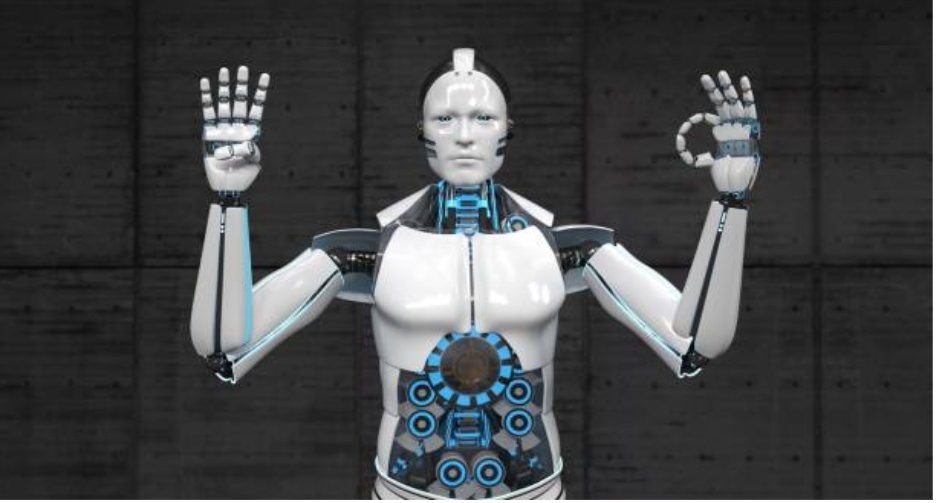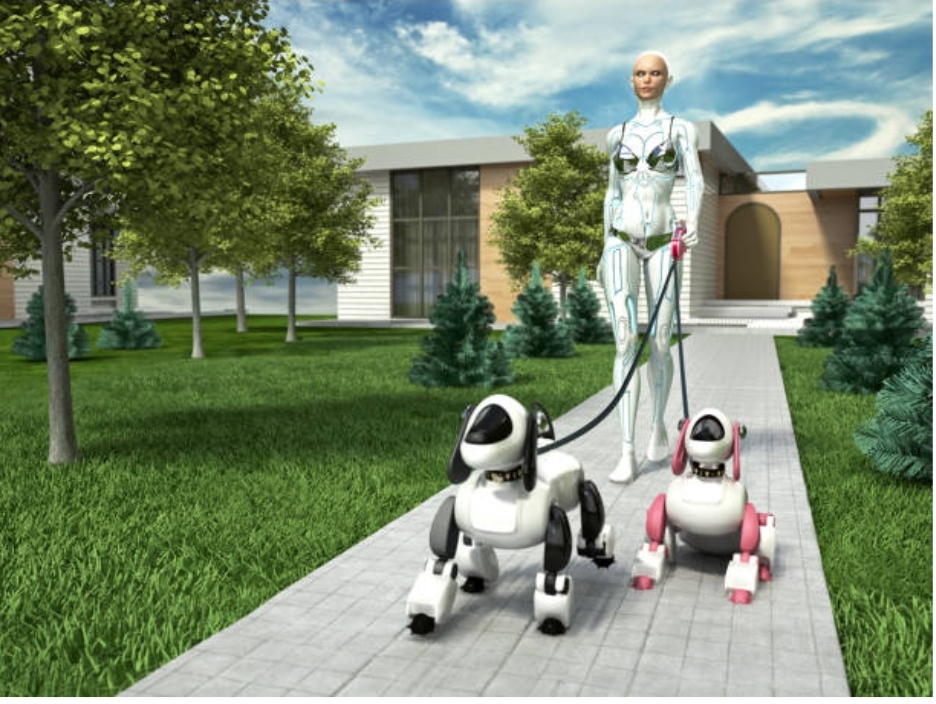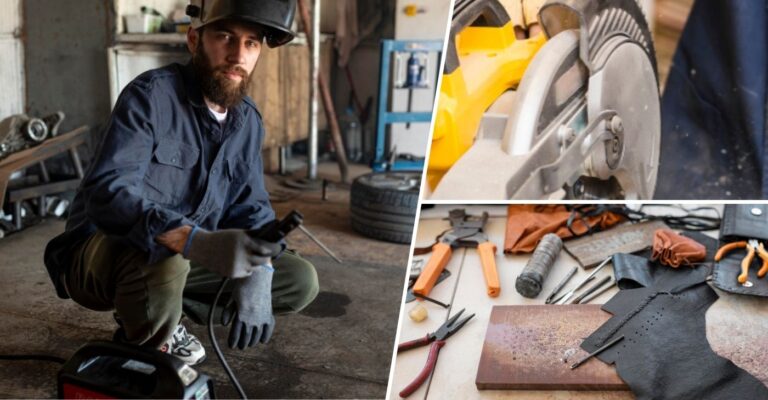Humanoid Robot Rotation Actuator: Structures, Manufacturing, and Tips
Rotation actuators are essential in creating humanoid robots capable of mimicking human movement and interaction with the environment. The device’s mechanics enable robots to move their limbs and appendages seamlessly as they perform programmed tasks.
Humanoid robot concept
This article explores the intricacies of this device, its functions, and its structure. We also discussed manufacturing processes for creating the rotation actuator and provided professional tips for customization. Read ahead!
What is a Rotation Actuator in a Humanoid Robot
A rotation actuator in a humanoid robot is a mechanical device that enables rotational movement at various joints or actuation points. Therefore, it’s how different parts of the robot, particularly the appendage (or limbs), move, rotate or pivot, simulating the typical movement in human joints.
The actuators operate like human joints, making them an essential component of humanoid robots. They are necessary to ensure the robot’s body parts are mobile, particularly the arms, legs, torso, and heads. Without the rotation actuator, the robot parts will be tightly fixed, inhibiting movement. Besides, they allow them to perform extensive tasks, ranging from walking, grasping objects, and interacting with the environment.
The rotation actuator in humanoid robots can also be likened to human muscles. Their functions are similar, providing the needed torque to execute specific actions and respond to external stimuli. It’s the actuator that affords robots the ability to perform tasks independently or under control. Therefore, they are essential to robotics research and development, as studies are in place to improve their design and overall functionality.
Functions of Rotation Actuator in a Humanoid Robot
We have already mentioned some of the functions of rotation actuators in humanoid robots. Below, we will emphasize more on these functions.
Joint Movement
The rotation actuator enables the movement of joints in humanoid robots. Joint movements are essential for mimicking human-like motions and ensuring efficiency in performing various tasks. It includes motions like bending, twisting, and rotating.

Locomotion
Rotational actuators are crucial in a humanoid’s mobility and complete locomotion. These mechanical components allow the robot to walk, turn, and even run and climb. They enable easy control and rotation of the joints of the limbs, particularly the legs and feet, to facilitate locomotion. The actuators allow easy interaction and navigation of the environment to maintain stability as the robots move.
Posture Control
Beyond walking, posture control is vital to prevent falling up, particularly when navigating unstable environments. The actuators equip the robot with the ability to modify its joint movements in real-time, promoting stability. Also, they help minimize locomotion issues such as collision or falls particularly when engaging in challenging tasks or navigating dynamic terrains.
Manipulation and Grasping
Rotation actuators also enable humanoid robots to perform simple tasks with their hands. They allow the robots to better interact with their environment and grasp objects of varying shapes and sizes.
Performing Different Expressions and Gestures
Besides the limbs, rotation actuators can also be present in the robot’s head, neck, and face. These actuators enable it to perform programmed gestures and expressions to convey emotions and simple social cues, such as handshakes and facial expressions. All these features aim to improve the robot’s ability to interact with the environment and mimic human actions.
Structures of Humanoid Robot Rotation Actuator
Humanoid robot actuators consist of various components required to make it function and enable precise movement and control. This section gives an overview of each element.
Permanent Magnet Brushless Motor
The permanent magnet brushless motor serves as the primary source of rotation for the actuator. It converts electrical energy to mechanical energy, providing the needed torque to drive the movement of the robot’s body parts. As the name suggests, it consists of permanent magnets and electromagnets arranged in specific configurations for easy interaction and activation of the required rotational motion upon initiation by electric current.
Harmonic Reducer
The harmonic reducer is the gear type used in automated systems, robotics, and other high-precision applications. Its function in a humanoid robot is to drive rotation actuators, achieving high gear reduction ratios in a compact and lightweight package. Consequently, it is sometimes called the harmonic drive or strain wave gear.
It comprises various flexible metal components, including the wave generator, flex spline, and circular spine. The wave generator is an elliptical component that applies force to the flex spline, causing it to deform in a wave-like pattern. Upon its deformation, it transmits torque, which meshes the circular spline into rotational motion, activating the actuator.
Holding Brake
As the name suggests, the holding brake is a safety feature in the rotation actuators to prevent unintended motion or rotation when the actuator is active. It utilizes an electromagnetic brake mechanism that secures the actuator in place upon engagement. It is a necessary feature in the humanoid robot to ensure stability and safety when operating or out of power.
Dual Encoder
Another critical component of the rotation actuator is the dual encoder. It operates as a feedback device, providing accurate information regarding the position and velocity of the control system of the rotation actuator system. The dual encoder features two encoder sensors, optical or magnetic encoders. They are usually mounted at different actuator points to ensure redundancy of positional feedback, essential to maintain accurate motion control and reliability in the robotic system.
Torque Sensor
As the name suggests, the torque sensor is a sensitive device incorporated into the rotation actuator to measure the torque the motor exerts. However, it also measures the torque transmitted from the harmonic reducer during operation. The device provides real-time feedback on the torque levels within the robotic system, ensuring adequate control of the motor speed and torque output for accurate and precise movement of the robot parts.
Bearing
Bearings are essential parts of the humanoid robot rotation actuator system. They support and facilitate the smooth rotation of shafts and other moving parts. Like typical mechanical bearings, they help reduce friction and wear, promoting more efficient gear transmission and more effortless rotational motion, ensuring the long-term durability of the actuator.
Manufacturing Techniques for Rotation Actuator Components
Manufacturing rotation actuator components requires high-precision manufacturing processes to ensure top-notch performance in humanoid robots. Below, we discuss the main techniques employed for the industrial fabrication of rotation actuator components.
CNC machining
CNC machining is one of the go-to manufacturing processes for fabricating parts with high accuracy and precision standards. The technique is highly versatile. It uses computer programs to control a series of cutters, such as mills, lathes, drills, and routers, to remove pieces of a workpiece till the desired shape is achieved.
Because of its suitability for an extensive range of materials and its ability to fabricate parts with impeccable precision, CNC machining is an important process for manufacturing components of a rotation actuator. The technique suits fabricating the shafts, brackets, gears, motor housing, transmission, and enclosures. Whether you are fabricating your rotation actuators with plastics, metal alloys, or composites, CNC machining is an ideal process to consider.
Sheet Metal Fabrication
Sheet metal fabrications involves creating parts using thin sheets of metals. The process utilizes different manufacturing processes like laser cutting, bending, forming, and welding to achieve the desired shapes and configurations of the intended structure. Sheet metal fabrication is a standard process for fabricating components of rotation actuators, particularly brackets, enclosures, and motor housings.
The process can incorporate specific techniques like CNC to ensure high precision and accuracy of its fabricated parts. One of its advantages is its suitability for creating lightweight and durable components that adhere to tight tolerance specifications.
3D Printing
Unlike the other two subtractive manufacturing techniques, 3D printing is an additive process that builds components in layers from digital design files. The method particularly revolutionizes the manufacturing industry, as it can print almost any design, including those made of metals and composites.
3D printing is one of the go-to manufacturing techniques in robotics manufacturing, where rapid prototyping is necessary. It ensures rapid parts creation and design customization, regardless of complex shapes and geometries, making it an excellent choice for fabricating rotation actuator components. Moreover, it generates little to no waste as it fabricates these complex parts.
Customization and Design Considerations for Rotation Actuator
Customization and design considerations are essential in optimizing rotation actuators’ and robotic systems’ performance and functionality. Below is an overview of some critical factors to consider.
Size and Weight Constraints
Optimizing the size and weight of the rotation actuator is essential for achieving optimal mobility, agility, and efficiency. Manufacturers should ensure that lightweight materials are used to achieve a compact actuator that ergonomically integrates into the entire robot structure. Size and weight optimization of the rotation actuator makes it easier for the robot to navigate constrained environments with limited space and weight allowances.
Range of Motion and Flexibility
The design of the rotation actuator should promote an extensive range of motion and flexibility of the robot’s joints for more human-like movement. Achieving this may involve optimizing the actuator’s mechanical structure, gearbox, and control system. This enables the robot to make smooth and precise motions as it performs specific tasks.
Material Selection and Durability
Material selection is always an essential consideration for any part fabrication. Manufacturers must ensure the selection of materials with good mechanical properties. Materials for fabricating rotation actuators must be durable and have high resistance to stress and harsh environmental conditions to ensure the reliability and durability of the actuators in real-life applications.
Integration with Control Systems
Manufacturers should consider seamless integration with the robot’s control system when designing and customizing rotation actuators. Compatibility with the robot’s software, feedback mechanism, sensors, and communication protocols is important to ensure accurate movement, efficient coordination, synchronization of commands, and real-time responsiveness.
Conclusion
Rotation actuators are an essential tech in achieving human-like motions in humanoid robots. They play fundamental roles in enabling joint movement and locomotion of the robots. While research is still to unlock new possibilities in humanoid robotics, rotation actuators are a gateway to the future.







